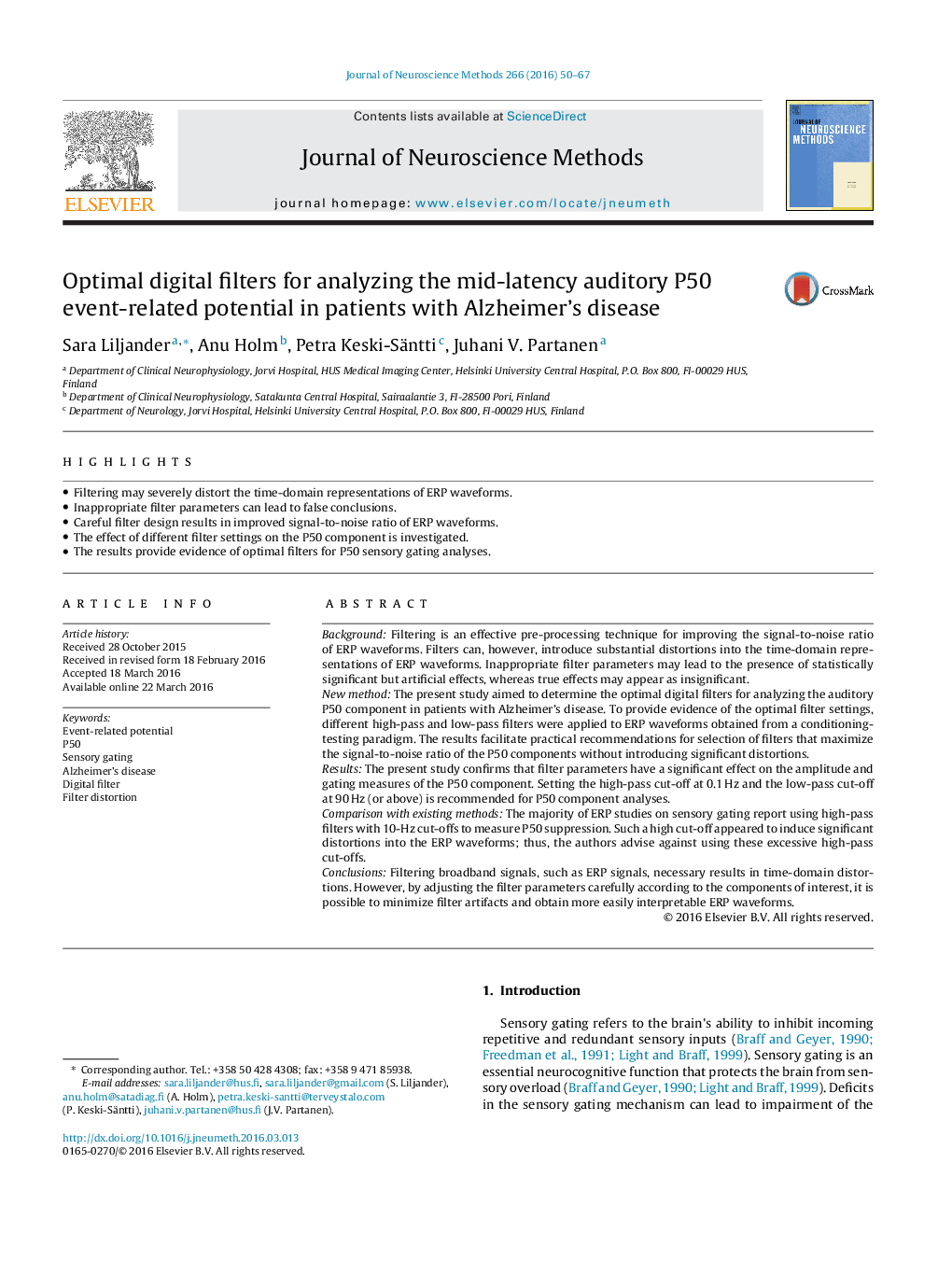| Article ID | Journal | Published Year | Pages | File Type |
|---|---|---|---|---|
| 6267715 | Journal of Neuroscience Methods | 2016 | 18 Pages |
â¢Filtering may severely distort the time-domain representations of ERP waveforms.â¢Inappropriate filter parameters can lead to false conclusions.â¢Careful filter design results in improved signal-to-noise ratio of ERP waveforms.â¢The effect of different filter settings on the P50 component is investigated.â¢The results provide evidence of optimal filters for P50 sensory gating analyses.
BackgroundFiltering is an effective pre-processing technique for improving the signal-to-noise ratio of ERP waveforms. Filters can, however, introduce substantial distortions into the time-domain representations of ERP waveforms. Inappropriate filter parameters may lead to the presence of statistically significant but artificial effects, whereas true effects may appear as insignificant.New methodThe present study aimed to determine the optimal digital filters for analyzing the auditory P50 component in patients with Alzheimer's disease. To provide evidence of the optimal filter settings, different high-pass and low-pass filters were applied to ERP waveforms obtained from a conditioning-testing paradigm. The results facilitate practical recommendations for selection of filters that maximize the signal-to-noise ratio of the P50 components without introducing significant distortions.ResultsThe present study confirms that filter parameters have a significant effect on the amplitude and gating measures of the P50 component. Setting the high-pass cut-off at 0.1Â Hz and the low-pass cut-off at 90Â Hz (or above) is recommended for P50 component analyses.Comparison with existing methodsThe majority of ERP studies on sensory gating report using high-pass filters with 10-Hz cut-offs to measure P50 suppression. Such a high cut-off appeared to induce significant distortions into the ERP waveforms; thus, the authors advise against using these excessive high-pass cut-offs.ConclusionsFiltering broadband signals, such as ERP signals, necessary results in time-domain distortions. However, by adjusting the filter parameters carefully according to the components of interest, it is possible to minimize filter artifacts and obtain more easily interpretable ERP waveforms.
